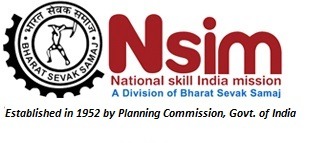Stories you may like
CIO
A CIO (Chief Information Officer) is a high-ranking executive in an organization who is responsible for managing its technology-related strategies and operations. CIOs play an important role in overseeing how information technology is used to support the organization's goals and objectives.
The primary responsibility of a CIO is to ensure that technology is aligned with the organization's overall vision and that it is used effectively to drive innovation, improve operational efficiency, and foster business growth. CIOs work closely with other executives and business leaders to understand their needs and identify opportunities where technology can be leveraged to achieve strategic objectives. By collaborating with different departments and understanding their unique requirements, the CIO helps create a technology roadmap that supports the organization's overall strategy.
A CIO stays up-to-date with the latest technology trends and evaluates their potential impact on the organization's business model and operations. They continuously assess emerging technologies and determine their relevance and potential benefits to the organization. By staying informed about advancements in the IT industry, the CIO can make informed decisions about implementing new technologies or upgrading existing systems to drive innovation and maintain a competitive edge.
Duties and Responsibilities
The duties and responsibilities of a CIO cover a wide range of strategic, operational, and managerial functions.
- IT Strategy Development: The CIO is responsible for developing and implementing the organization's IT strategy in alignment with its overall business objectives. This involves understanding the business needs, evaluating technology trends, and identifying opportunities where technology can drive innovation, improve operational efficiency, and create a competitive advantage.
- Technology Infrastructure Management: The CIO oversees the management and maintenance of the organization's technology infrastructure, including hardware, software, networks, and data centers. They ensure that the infrastructure is robust, scalable, secure, and aligned with industry standards and best practices.
- IT Operations and Support: The CIO is responsible for ensuring the smooth operation of IT systems and providing support to end-users. This includes managing service level agreements, monitoring system performance, resolving technical issues, and implementing disaster recovery plans to minimize downtime and ensure business continuity.
- IT Governance and Compliance: The CIO establishes and enforces IT governance policies, procedures, and standards to ensure compliance with regulatory requirements, data privacy laws, and industry-specific regulations. They implement effective controls to safeguard data, mitigate risks, and ensure the integrity and confidentiality of information assets.
- IT Budgeting and Resource Management: The CIO develops and manages the IT budget, allocating resources effectively to support the organization's strategic projects. They prioritize technology investments, evaluate vendor contracts, negotiate pricing, and optimize IT spending to maximize value and return on investment.
- Business and Technology Alignment: The CIO collaborates with other business leaders to understand their needs, challenges, and opportunities. They work closely with departments across the organization to identify technology solutions that enhance productivity, streamline processes, and enable business growth. The CIO acts as an advisor, providing insights on new technologies and recommending solutions that support business objectives.
- Cybersecurity and Risk Management: The CIO plays a crucial role in ensuring the security of the organization's digital assets. They develop and implement cybersecurity strategies, including risk assessments, threat detection and prevention measures, incident response plans, and employee training programs to enhance cybersecurity awareness and protect against data breaches and cyber threats.
- Vendor Management: The CIO manages relationships with technology vendors, ensuring the selection of reliable and cost-effective solutions that meet the organization's needs. They negotiate contracts, monitor vendor performance, and evaluate emerging technologies and partnerships to improve the organization's technological capabilities.
- IT Talent Management: The CIO oversees the recruitment, development, and retention of IT talent within the organization. They create a culture of creativity and continuous learning, fostering an environment that attracts top IT professionals and promotes professional growth and development.
- Technology Innovation and Digital Transformation: The CIO plays an important role in driving technology innovation and in modernizing and improving digital processes. They explore new technologies, evaluate their potential benefits, and take charge of implementing transformative solutions that improve the customer experience, streamline business operations, and foster innovation throughout the organization.
Workplace of a CIO
The workplace of a CIO can vary depending on the organization and its industry. However, there are some common aspects that can be described to provide an understanding of a CIO's workplace environment.
CIOs typically work in office settings, whether in a corporate headquarters, regional office, or dedicated IT department. They may have their own office or work in an open workspace alongside their team members. The office environment is usually equipped with the necessary technology infrastructure and tools to support their responsibilities, such as computers, communication systems, and access to relevant databases and software.
As a CIO's role involves collaborating with various stakeholders, they often spend a significant amount of time in meetings and discussions. They interact with other C-suite executives, department heads, and external partners or vendors. These meetings can take place in conference rooms, boardrooms, or through virtual platforms for remote collaboration.
CIOs also have a presence in the data center or server rooms, which house the organization's IT infrastructure. While they may not be directly involved in day-to-day maintenance activities, they oversee the management and security of the infrastructure and ensure it aligns with the organization's technology strategy.
Additionally, CIOs may travel to attend industry conferences, technology summits, and meetings with external stakeholders. This allows them to stay updated on emerging technologies, network with peers, and explore potential partnerships or solutions that can benefit the organization.
The workplace of a CIO is dynamic and fast-paced, requiring them to stay abreast of technological advancements, industry trends, and regulatory changes. They must be adaptable to changing circumstances and have strong leadership and communication skills to effectively collaborate with both technical and non-technical teams.
How to become a CIO
Becoming a Chief Information Officer (CIO) typically requires a combination of education, experience, and professional development. Here are the key steps to pursue a career path leading to a CIO position:
- Education and Qualifications: A Bachelor's Degree in Computer Science, Information Technology, or a related field is often the minimum requirement for entry-level IT positions. However, many CIOs hold advanced degrees, such as a Master's in Business Administration (MBA) or a Master's in Information Systems (MIS), to gain a broader understanding of business strategy and management principles.
- Gain Relevant Experience: Building a strong foundation of experience is crucial for aspiring CIOs. Starting with entry-level IT roles, individuals can progress through various positions such as systems analyst, IT project manager, IT consultant, or IT manager. These roles provide exposure to different aspects of IT operations, project management, and leadership.
- Develop Leadership Skills: Aspiring CIOs should focus on developing their leadership abilities. This includes honing skills such as strategic thinking, communication, decision-making, and team management. Taking on leadership roles, participating in cross-functional projects, and seeking opportunities to lead teams can help develop and demonstrate these skills.
- Gain Business Acumen: CIOs need to understand the business side of the organization and how technology can contribute to its success. Seeking opportunities to collaborate with business units, working closely with other departments, and pursuing business-focused certifications or coursework can help develop a strong understanding of business operations and goals.
- Continuous Learning and Professional Development: The field of technology is constantly evolving, so it's essential for aspiring CIOs to stay updated with the latest trends and advancements. This can be achieved through attending industry conferences, participating in webinars, pursuing certifications relevant to their expertise, and engaging in professional networking to exchange knowledge and insights with peers.
- Expand Industry Knowledge: Developing a deep understanding of the industry or sector in which the organization operates is crucial for a CIO. Staying informed about industry-specific challenges, regulations, and emerging technologies helps CIOs align IT strategies with business objectives and deliver solutions that drive value.
- Build a Professional Network: Networking is vital for career growth. Attending industry events, joining professional associations related to technology and management, and engaging in online communities allow aspiring CIOs to connect with industry leaders, gain insights, and access potential opportunities.
- Seek Executive Exposure: Aspiring CIOs should actively seek opportunities to work closely with executives, demonstrate their ability to contribute to strategic discussions, and showcase their understanding of technology's impact on the business. This can include volunteering for cross-functional projects, presenting at leadership meetings, and collaborating on enterprise-wide initiatives.
- Pursue CIO-specific Roles: To gain direct experience in the role, aspiring CIOs can target positions such as IT Director, VP of IT, or other senior-level IT leadership roles. These positions provide an opportunity to oversee IT strategy, manage IT teams, and make decisions that impact the organization's technology landscape.
- Develop a Personal Brand: Building a strong personal brand is essential for career advancement. This includes establishing credibility through thought leadership, contributing to industry publications or blogs, speaking at conferences, and leveraging social media platforms to share insights and connect with professionals in the field.
Requirements for CIOs
CIOs must employ several hard and soft skills to excel at this job. Successful CIOs typically have a mix of technical and interpersonal skills, including:
- Strategic planning and execution
- IT governance and cybersecurity knowledge
- Familiarity with cloud, AI, and data analytics technologies
- Accustomed to building relationships
- Strong leadership and team management
- The ability to translate complex technical concepts into business language
- Cross-departmental collaboration and communication
CIOs must also stay agile as technology cycles change rapidly, and digital transformation is ongoing.
CIO Career Path
The career path to becoming a CIO typically involves a combination of education, experience, and continuous professional development.
- Education: Many CIOs begin their journey by earning a bachelor's degree in computer science, information technology, or business administration with a focus on IT. Some may also pursue advanced degrees.
- Early experience: After completing their education, aspiring CIOs often gain practical experience by working in various IT roles within organizations. This includes positions such as systems analyst, network administrator, project manager, or IT consultant.
- Mid-level management: As professionals progress in their careers, they may take on leadership roles such as IT manager, director of information technology, or chief technology officer (CTO). These positions give future CIOs opportunities to get valuable experience managing IT teams, overseeing tech initiatives, and driving tech strategy.
- Executive roles: At this point, professionals have the ability to advance to CIO, CTO, or other C-suite positions
Salary for a CIO
The role of the CIO often pays well, with average salaries ranging from $245,000 to $428,000.1 Lower-ranking managers for computer and information systems average around $171,200 per year.2
In small companies, CIOs typically make less money and have different job titles. Smaller businesses may have an IT manager, lead database manager, chief security officer, or application development manager.







User's Comments
No comments there.